- Best Cultivator Attachments Guide - December 23, 2021
- How to Find the Best Leaf Blower Attachment - December 23, 2021
- Best 21 Inch Lawn Mower Blade Options - December 18, 2021
If you’re looking to spruce up your lawn with some new grass or plants, then you’ll need to put some mulch into your soil.
Spreading mulch on the soil is the key to keeping it healthy in varying weather conditions and protecting it from the dangers threatening your yard, such as weeds. Organic mulch can be harvested from resources found in your own yard, such as grass clippings and shredded leaves.
However, there are alternatives to mulch, such as pine straw. And in this Pine Straw vs. mulch guide, I’ll be comparing the differences between the two options so that you can make the best choice for your lawn. I’ll also give a few alternatives in case neither pine straw nor mulch suits your needs.
The Main Differences Between Pine Straw vs Mulch
The main differences between Pine Straw vs mulch are:
- Pine Straw will mesh together in order to withstand the pressure, whereas Mulch is likely to wash away.
- Pine Straw’s Needles are visually appealing due to the light color of it, whereas Mulch is darker and won’t look as great in your yard.
- Pine Straw can be spread on top of old Pine Straw, whereas Mulch needs old mulch to be removed before spreading new mulch.
Pine Straw Characteristics and Traits
Pine Straw (also referred to as Pine Needles) acts as a mulch, and many people prefer it over mulch due to how well it protects your soil in winter conditions.
Pine Straw is incredibly durable during tough weather conditions such as heavy rain and wind. In addition, unlike other mulches, it’s unlikely to wash away from beds of soil because it meshes together when under pressure.
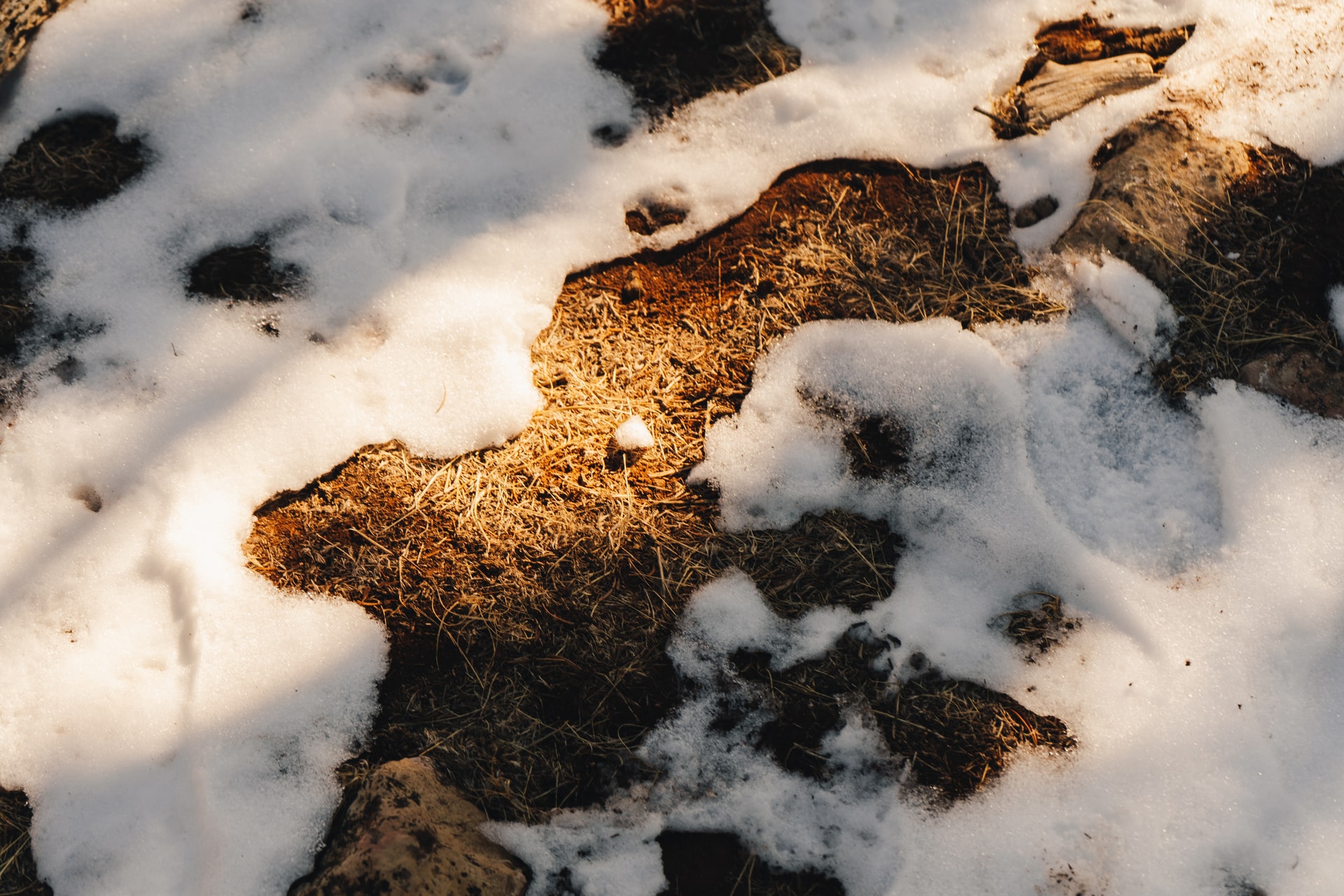
Pine Straw is excellent at keeping weeds out of your soil. It means you’ll need to use very little weed control, saving you time and money in the future when you’re designing your perfect lawn.
Like mulch, Pine Straw will attract small insects such as termites due to its cover, which could potentially attract bugs.
How to Spread Pine Straw
The best time to spread Pine Straw is in late Fall or early Winter, as it needs to be after leaves have fallen. This means you won’t need to recover it a short while after spreading it for the first time.
Instead of spreading Pine Straw all at once, you’ll want to do it in layers. This will avoid a messy look.
If this is the first time you’re spreading pine straw, then you’ll need to spread 3 to 4 inches to create a healthy base. However, if you’re covering an existing pile of Pine Straw, all you need to do is add an extra layer.
How to Care for Pine Straw
Pine Straw is incredibly low maintenance. We recommend you top it up at least once every year after the leaves have fallen. This should keep it looking neat and tidy. It’s due to harbor some damage during the year, but it should stay relatively healthy.
However, if you start to notice the color beginning to fade and turning grey, we recommend adding another layer. Pine Straw does last five years which is in line with mulch.
To keep the earlier mentioned insects and bugs out of your Pine Straw, you should create a barrier with something such as gravel. That will prevent easy access to the Pine Straw, and using a fertilizer like Milorganite will help as well. We have a great article on when to use milorganite if you’re interested!
Pros and Cons of Pine Straw
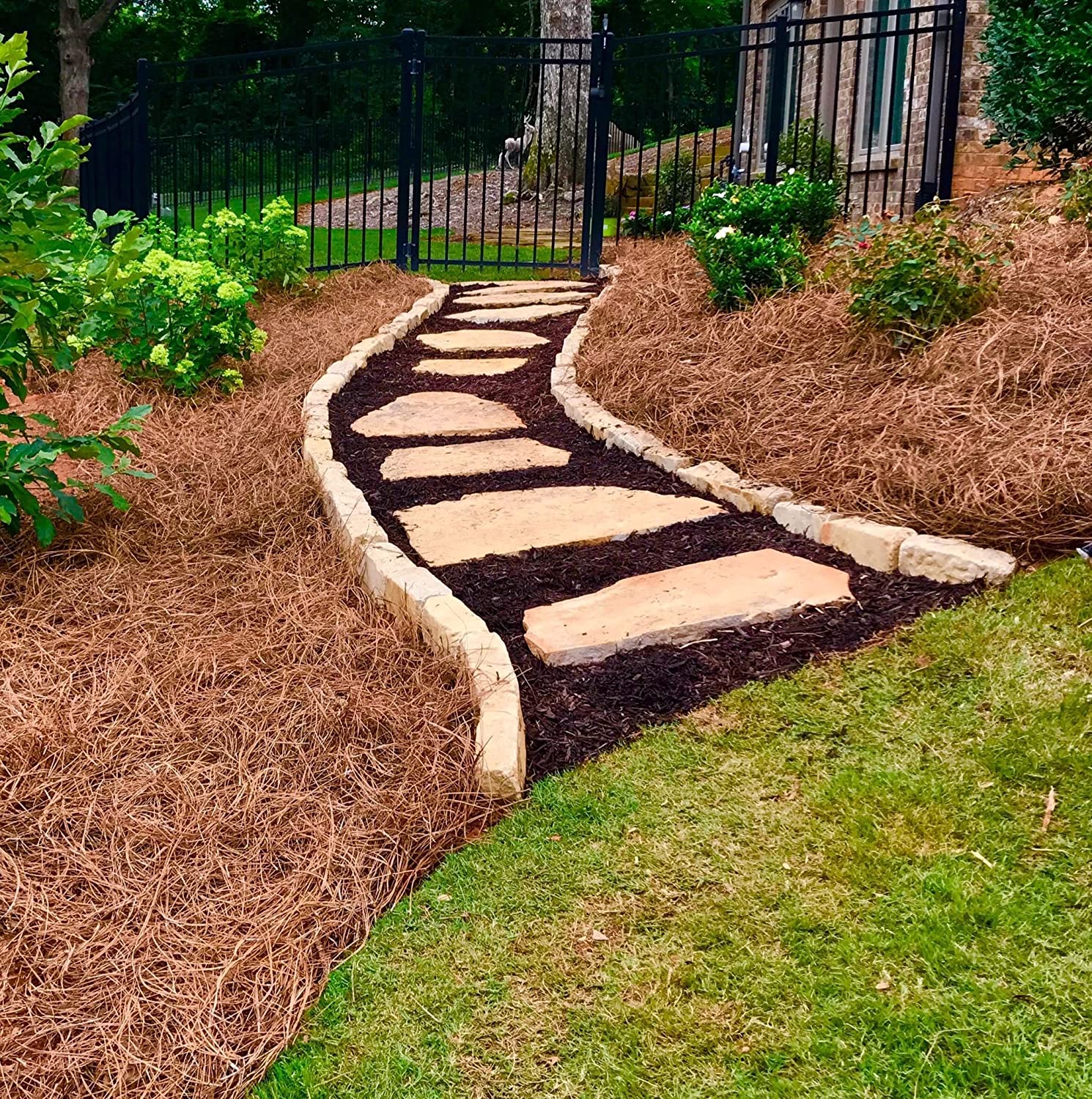
Pros
- Pine Straw is low maintenance
- Pine Straw is excellent at resisting heavy downpours and strong winds
- Pine Straw is aesthetically pleasing
- Pine Straw is great at weed prevention
- Replacing Pine Straw is easier as you can top it up every few months.
Cons
- Pine Straw attracts small insects that will attract bigger bugs
- Pine Straw is commonly more expensive than other mulch options
- You are required to use a lot of Pine Straw when first spreading it
The Case for Pine Straw
Pine Straw is a great alternative to mulch and could be the better option especially if you’re looking for something that will survive in harsh weather conditions. However, before you start spreading Pine Straw, there are a few things you should be sure of:
- Have you got the time to replace and top them up when they start to decompose?
- Have you taken all the necessary steps to prevent pests entering the mulch?
- Have you cleaned your lawn to prevent sticks, leaves, and weeds affecting your Pine Straw?
Recommended Product
USA Pine Straw
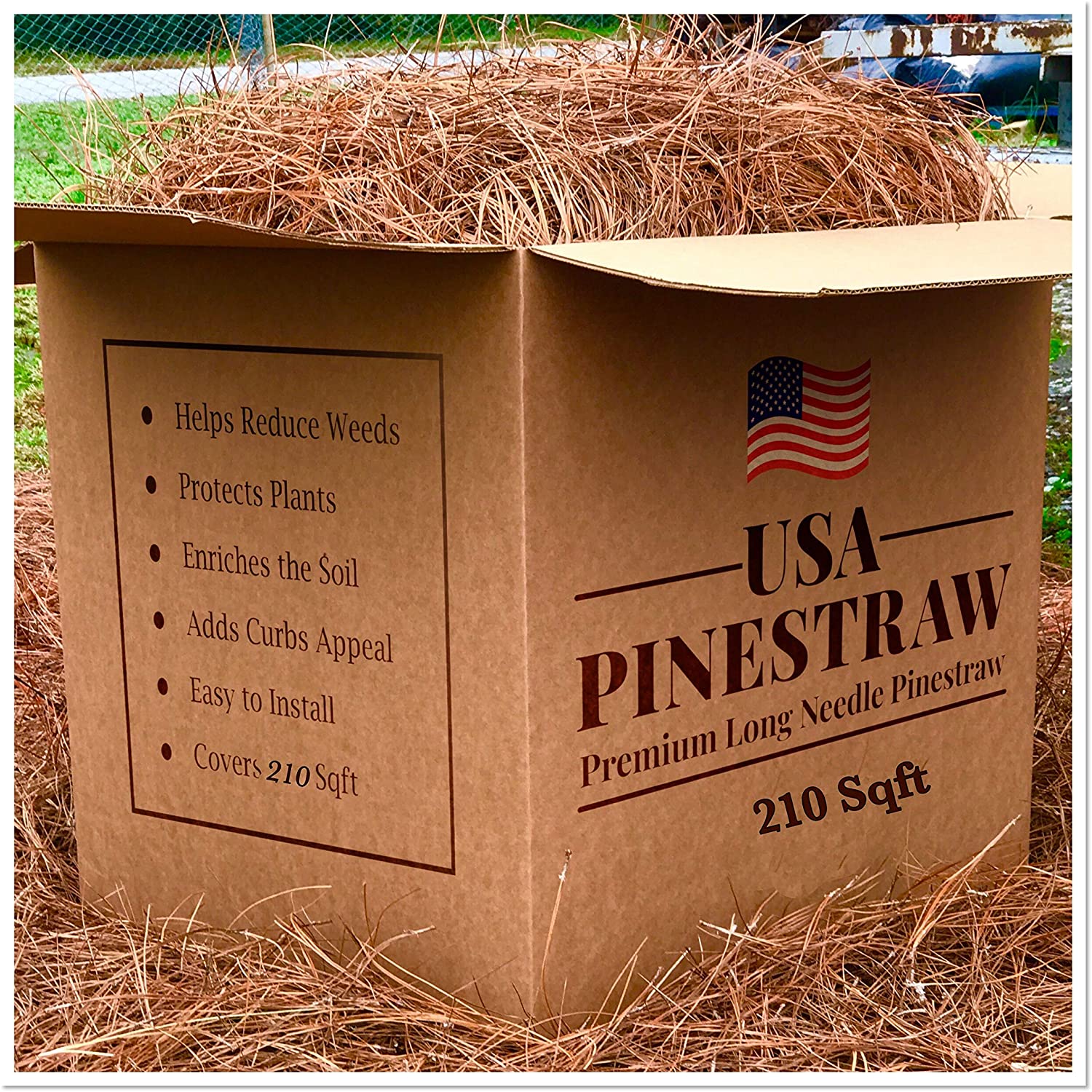
USA Pine Straw is a company that delivers Pine Straw in a range of different sizes. You can get it on a pallet or in a box. It really depends on how much you’re looking for. Their most popular box at 210sqft is available on Amazon. It’s high-quality Pine Straw that will look great in your yard.
Mulch Characteristics and Traits
There are many different types of mulch, and some would even refer to Pine Straw as a mulch, but straw mulches are different enough to be classed as something separate. The two different types of mulch are Organic and Inorganic.
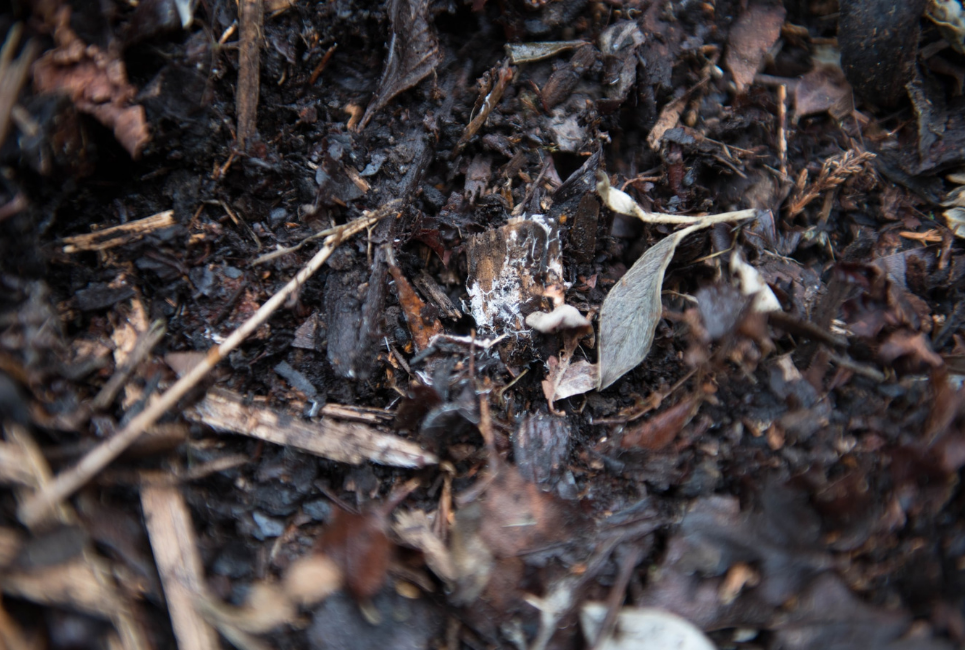
Organic Mulch
Organic mulch is 100% natural. Stuff you could gather yourself if you had the necessary resources. It’s better to reuse these materials rather than throw them away like people usually would. These include materials such as:
- Straw and Hay
- Wood Chippings
- Leaf Shreddings
- Grass Clippings
- Compost and Manure
- Newspaper
Organic mulch is easier to gather and less expensive, however, it does come with the downfall of needing to be replaced more often than inorganic mulch.
Using organic mulch will reduce the amount of watering you’ll need to do, and it will provide nutrients to the soil. It will also keep the soil at the correct temperature during Spring.
Inorganic Mulch
Inorganic mulch is made up of artificial materials such as:
- Landscape Plastic
- Rocks and Other Stones
- Rubber
- Landscape Fabric
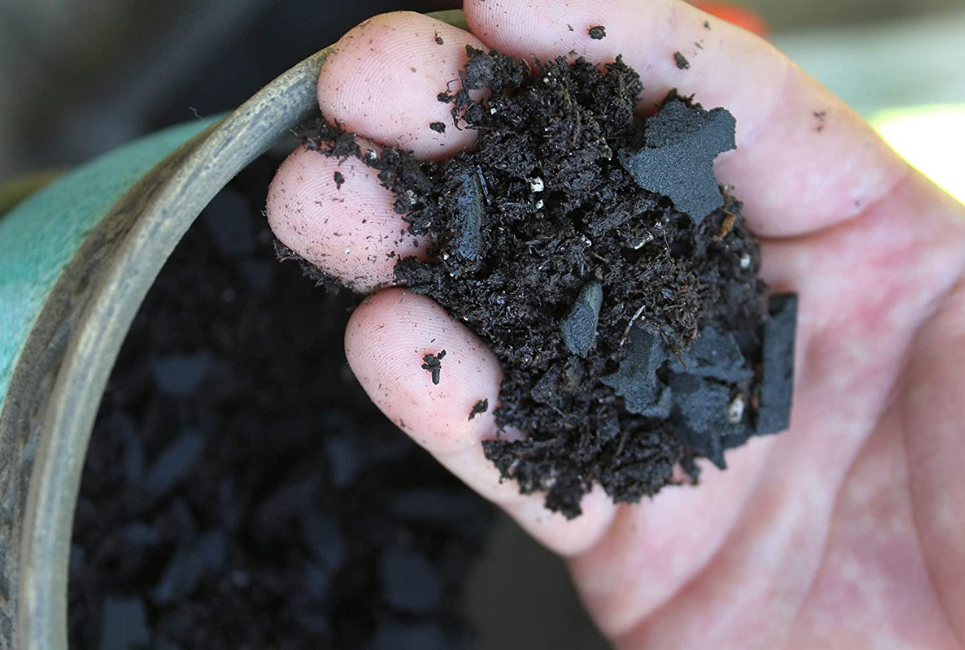
Inorganic mulch comes at a higher price, but it’s popular because it won’t decompose like organic mulch.
Inorganic mulch will provide protection against weeds during germination periods. It will also prevent soil erosion and damage from heavy rainfall on plants.
It will help maintain soil temperature during different climate conditions, and moisture will be preserved. This is because the mulch will slow evaporation.
Both mulch types will perform similarly, meaning you really don’t need to worry about which to pick from these two. It really depends on how much you want to spend. Organic mulches do have the added bonus of putting the organic matter into the soil.
How to Spread Mulch
Before spreading the mulch, be sure to clean the ground of any dry leaves, sticks, weeds. You also shouldn’t add mulch layers on top of existing mulch, especially if adding that layer will raise it above the recommended thickness.
Organic mulch needs to be spread to a thickness of 2 – 3 inches, and be sure to lay the mulch on moist soil.
How to Care for Mulch
One excellent thing about mulch is that it is low maintenance. Some mulches can even last years without attention. But there are a few things you need to do to keep it as healthy as possible.
You don’t want little insects and bugs getting into the mulch either for nutrition or to make a home, so be sure to lay a barrier around the mulch. Gravel can work well as a barrier.
You’ll want to remove any weeds from the mulch by hand, and if you do notice weeds appearing frequently, you need to raise the mulch slightly.
If mulch begins to rot, get ready to replace it completely. As stated before, don’t have over 3 inches of mulch. It can damage plant roots if it does raise like this, and the mulch will become hydrophobic.
Pros of Mulch
- Mulch is low maintenance
- Mulch is resistant against weeds
- Inorganic mulch controls the temperature of the soil during all different climates, and organic mulch will control the temperature in Spring.
- Organic mulches are inexpensive and can even be resourced naturally.
- Inorganic mulch can last a long time if looked after properly
- Mulches reduce soil erosion
Cons of Mulch
- Mulch can attract small insects and bugs
- Inorganic mulch is extremely expensive
- You need to use a lot of mulch when using organic resources, and it needs to be around 3 inches thick.
The Case for Mulch
There are so many different kinds of mulch that it really gives you more options. Mulch is great for your plants and will support healthy growth. There are a few things you should make sure of before you spread mulch, however:
- Are you prepared to replace the old soil when it starts to decompose?
- Are you prepared to take the necessary steps to prevent pest infections?
- Is your lawn completely clean of sticks, dry leaves, and weeds?
Recommended Products
Organic: Brown Hardwood Bark Bulk Wood Mulch
This biodegradable hardwood bark will act as a great mulch for your yard. In addition, it will protect your plants and control the moisture in your soil.
Inorganic: NuScape Nugget Rubber Mulch
This pallet of rubber mulch is made from 100% recycled rubber. As a result, it won’t lose its original look as time passes by. It also won’t attract small pests.
Alternative Mulch Types
Grass Clippings
You can reuse the grass clippings as mulch after mowing your lawn. This will work perfectly well for garden beds. You will need to dry the clippings before you spread them. Or you can compost them. These are likely one of the easiest mulch to collect and reuse. If struggling to gather grass clippings due to wet grass, we have a useful article on successfully mowing wet grass.
Rock
Rock and other types of stones, such as pebbles, can be used on flowerbeds. They’ll lower the chance of weeds growing, and it doesn’t really need to be replaced. However, stones won’t decompose, meaning your soil won’t get as many nutrients as it would from other options. This can all be sorted by getting fertilizer to help with the garden.
Leaves
Shredded leaves from trees can make an excellent mulch for your garden beds and your lawn. Leaves can also be mulched, but don’t leave them sitting on your lawn or flowerbeds during fall and winter seasons. This could affect growth when warm conditions start again.
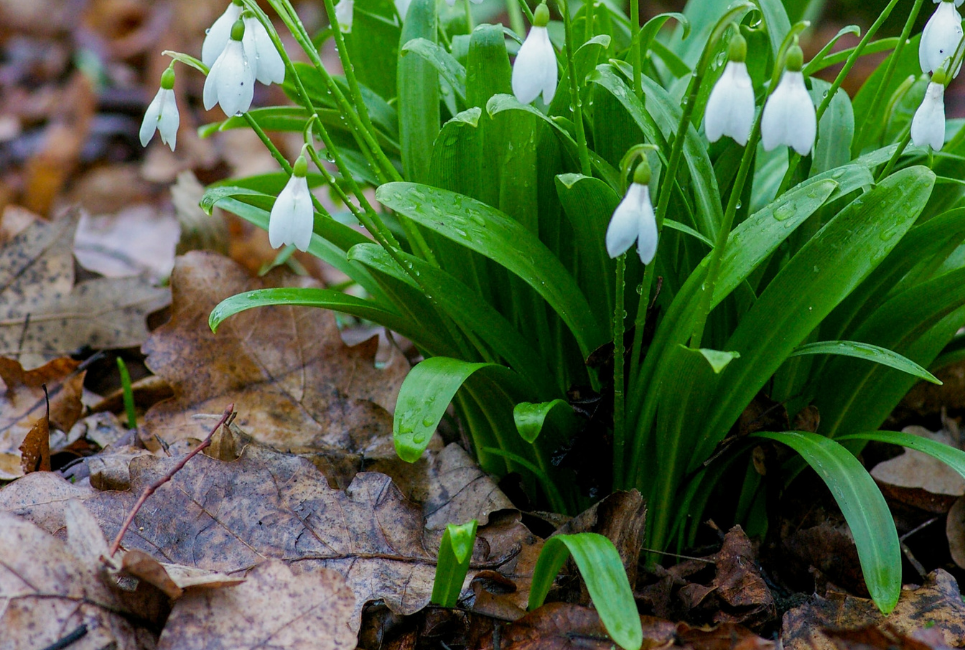
Newspaper
You can use whole sheets of newspaper as an effective mulch for your flowerbeds. You might be worried about the ink on the newspaper causing issues, but newspapers use organic ink, so it’ll be absolutely fine.
Frequently Asked Questions
Question: Do I need Mulch?
Answer: If you’re serious about creating the best yard possible, then mulching should be a priority for you. It will lower the chance of plants and grass being damaged from threats like weeds. It’ll also help your soil by maintaining moisture levels and feeding it nutrients. Pine Straws especially will support your plants and soil in cases of heavy weather.
Question: Inorganic or Organic?
Answer: If you’re for a more biofriendly mulch, pick from one of the many available organic options. If you’d rather have something long-lasting, go with an inorganic mulch, they have a nearly infinite lifespan but still provide some of the benefits. In addition, organic mulch will provide your soil with more nutrients.
Question: Why Are There Mushrooms in my Mulch?
Answer: If fungi are growing in your mulch, then it’s usually a sign to change your mulch because it is decomposing. Mushrooms grow in moist places, and they aren’t any danger to your mulch, soil, or plants. It’s just best to replace the mulch soon after this.
Question: Is Mulch Dangerous for my Pets?
Answer: Some mulches can be incredibly dangerous for pets due to them being filled with dangerous toxins or because they’re a serious choke risk. Wood-based mulch is safe for dogs making it a popular choice. If you’re looking to accommodate animals such as dogs in your yard, then you need to make sure you create the perfect lawn. You don’t want to risk harming your pet, so I highly recommend reading our article on the best grass for dogs.
Question: How Long Does it Take for Mulch to Grow?
Answer: After around 5 years, you’ll definitely need to replace the mulch completely. Before then, if it looks as if it needs sprucing up, you should place another layer onto the mulch. With organic mulches (not Pine Straw), it’s best not to go above the recommended height of 3 inches.
Conclusion
If you’re looking for something to protect your plants and soil from heavy weather, then Pine Straw will be your best bet. It’ll also look a lot better in comparison to most mulch types due to its lighter color.
Mulches are the best for people who are looking to reuse the resources around them. It’s also better at feeding nutrients to the soil and protecting against threats like weeds. Mulches are also great at controlling the soil temperature during different climates.
If you’re looking for further information on mulches, I recommend this article on finding the best mulch for your yard.

